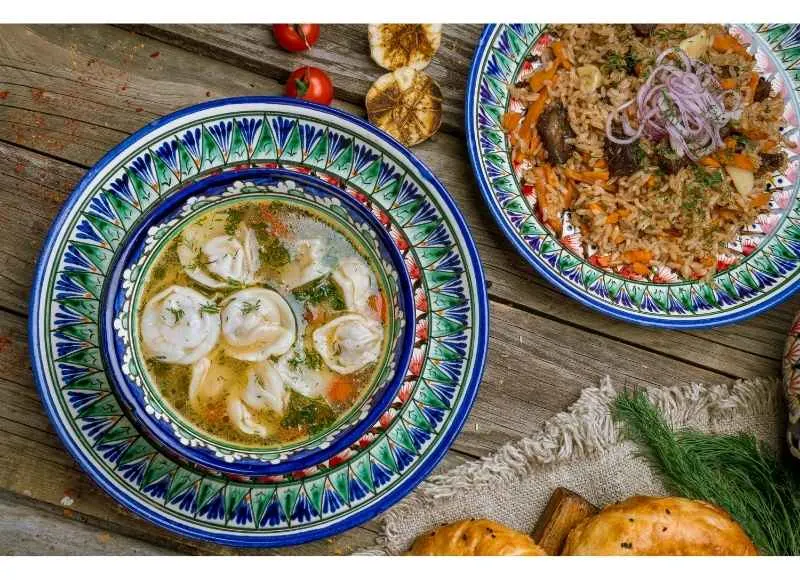Introduction: Uzbek Cuisine and Its Cultural Significance
Uzbek cuisine is a blend of the cooking traditions of Central Asia and the Middle East. Its unique combination of flavors and spices reflects the country’s history and geography, as well as the cultural influences that have shaped its culinary traditions. Uzbek cuisine is an essential part of the country’s cultural heritage, and its dishes have significant historical and cultural importance.
Historical Significance of Uzbek Cuisine
Uzbek cuisine has a rich history that dates back to the ancient Silk Road trade routes that once connected China to Europe. The region’s nomadic tribes and pastoral communities developed a cuisine that relied on dairy products, meat, and grains. Over time, Uzbek cuisine absorbed elements from the cuisines of surrounding countries, including Russia, China, and Persia. The result is a unique blend of flavors and ingredients that is unmistakably Uzbek.
Traditional Uzbek Dishes and Their Ingredients
Uzbek cuisine is known for its hearty and flavorful dishes, many of which are made with lamb, beef, or chicken. Some of the most popular ingredients in Uzbek cuisine include rice, vegetables, dried fruits, and nuts. Spices like cumin, coriander, and red pepper are also commonly used. Uzbek cuisine is known for its rich, complex flavors and the use of multiple spices in each dish.
Uzbek Pilaf: A National Dish with a Rich History
Uzbek pilaf is a national dish that has been a staple of Uzbek cuisine for centuries. It is made with rice, meat, and vegetables, and flavored with a variety of spices. The dish is traditionally cooked in a large pot called a kazan, which is placed over an open fire. The meat and vegetables are first sautéed in oil, then the rice is added along with water or broth. The dish is served as a main course or a side dish, and is often accompanied by salads, pickles, and yogurt.
Samsa: A Popular Uzbek Pastry with a Unique Taste
Samsa is a popular pastry in Uzbek cuisine that is similar to a meat-filled turnover. The pastry is made with a thin, flaky dough that is filled with spiced meat and onions. The pastry is then baked in a tandoor, a clay oven, until it is golden brown and crispy. Samsa can be eaten as a snack or as a meal, and is often served with a side of yogurt or a cup of tea.
Sumalak: A Cultural Uzbek Dish with a Symbolic Meaning
Sumalak is a traditional Uzbek dish that is made from sprouted wheat, water, and sugar. It is a dish that is prepared during the celebration of Navruz, the Persian New Year. Sumalak is prepared by soaking wheat in water for several days until it sprouts, then boiling the sprouts until they form a thick, porridge-like consistency. The dish is then sweetened with sugar and served during Navruz celebrations. Sumalak has a symbolic meaning for Uzbeks, representing the renewal of life and the coming of spring.

